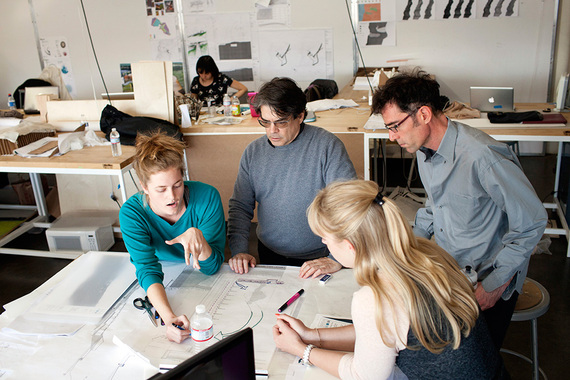The word "brand" has evolved from meaning a logo or a brand name to the much broader idea of audience perception.
Simply put, your brand is what people think or feel when they hear your name.
While business has been focused on brand building for some time, it has been only in the past decade that colleges and universities have put significant thought and effort into clarifying and refining their brands.
Academic Excellence
Academic excellence must be the cornerstone of any college or university brand. But how excellence is established as a brand, whether it is authentic, and what it exactly means, is not straightforward.
When we think of Harvard, Princeton, Williams, or Stanford, we don't ask: Is that a good school? Their established reputations imply academic excellence. In short, greatness--with an assumption of superior teaching and student learning--is a given; it is foremost.
Yet how was excellence established? What reinforced the brand?
Was it a celebrated institutional history, competitive admissions with single-digit admit rates, award-winning faculty, funded research that led to the creation of new knowledge, successful sports teams, famous alumni, state-of-the-art labs and facilities?
For many schools, a combination of these factors undoubtedly contributed to their strong brands.
Can Pedagogy Be the Brand?
In higher education, once a perception of excellence is established, a dramatic narrative unfolds and loyalty to the brand is rarely questioned. Often lost within the brand, however, is the quality of teaching and learning--specifically at the undergraduate level--that characterizes each school.
Are there material differences between undergraduate teaching at Williams and Harvard--not curricular differences imbedded in core or major requirements--but pedagogical differences? Such differences are probably not substantial.
Theory & Practice
Unlike many traditional colleges and universities, the most tangible asset of an art and design education is the distinctive structure and style of teaching and learning that occurs daily on our campuses, across all disciplines. It's the kind of pedagogy that many traditional schools are beginning to recognize and strive to incorporate into their practice.
At my school, California College of the Arts, teaching and learning can be summed up in the motto found on our seal: "Theory and Practice"--what American philosopher and educational reformer John Dewey labeled practical idealism.
Our students, regardless of their choice of major, engage in project-based learning.
They learn through making. They learn integrative team-based thinking and how to build their ideas through iterative, progressive modeling. They gain empathy and an appreciation of how different disciplines bring distinct approaches to solving complex real-world problems. They learn to focus their creative ideas and to make art that matters--not just within the boundaries of our campus, but also out in the world.
Art and design students learn within a culture of critique, wherein they present their creative work to peers, faculty, and outside experts in a public forum. Feedback is not confined to the private comments from teacher to student at the end of a term paper, but through direct feedback in a forum of diverse and sometimes conflicting views and opinions.
STEM to STEAM
Highlighting pedagogy (the style and structure of teaching) and differentiating it from curriculum is important. But, what does that really mean?
We can look at the STEM to STEAM discussion for a good example.
The U.S. Department of Education has pushed for increased education in STEM subjects (science, technology, engineering, and math) to help prepare the next generation of skilled workers and to keep the United States competitive in an evolving global marketplace.
This is an understandable and attractive goal that received considerable media attention; however, it does have some drawbacks.
John Maeda, former president of Rhode Island School of Design and an innovative thinker and designer, expanded our understanding when he founded the STEM to STEAM movement, emphasizing the need to add an "A" for arts to the STEM acronym.
This is broadly understood as a curricular issue--students studying science and math would benefit from also taking some art or design courses. Quite true, but we need to understand this as a pedagogical challenge rather than solely a matter of curriculum.
The Secret Sauce: The Way We Teach
The way we teach art and design is fundamentally different from the way we teach science, technology, engineering, and math. Content is only part of the challenge--the manner of teaching is of equal, or perhaps greater, importance than the subject matter.
If some STEM subjects were taught in a manner similar to art and design--without sacrificing or "dumbing down" content--we might have a stronger, more diverse, and creative generation of scientists, technologists, engineers, and mathematicians.
Through a broadened application of art and design pedagogy, maybe we could stop bemoaning the lack of women in STEM fields, which was recently called a "national security issue" by U.S. News & World Report.
If we define brand as audience perception, then art and design schools have some serious work to do to reach the level of the elite universities. However, there are good indications that we're moving the dial.
Entrepreneurs, employers, community organizations, and business leaders increasingly recognize and value the studio-based pedagogy and collaborative learning that are at the core of an art and design education.
By expanding the understanding of our distinct educational model, art and design colleges can also proudly wear the mantle, or brand, of academic excellence.

